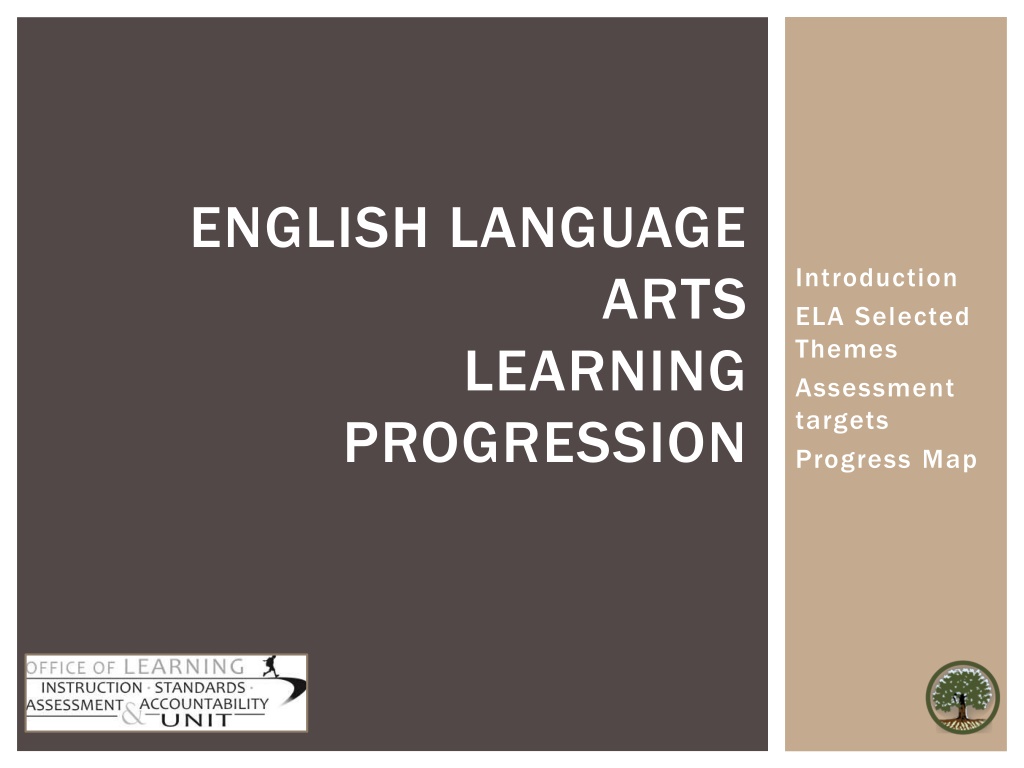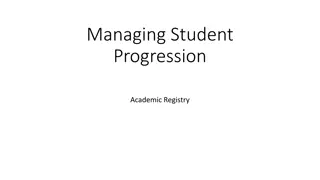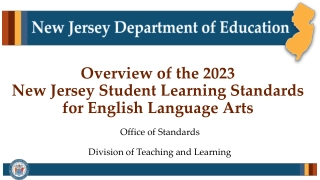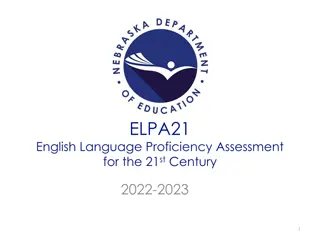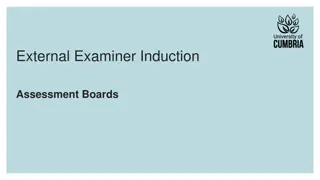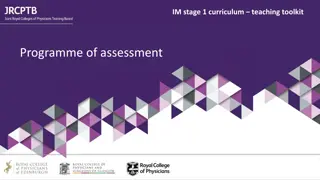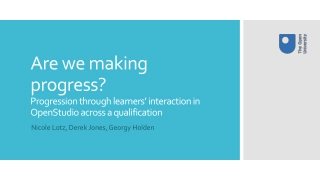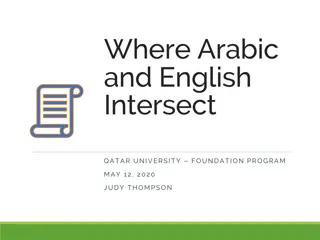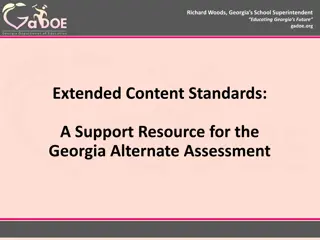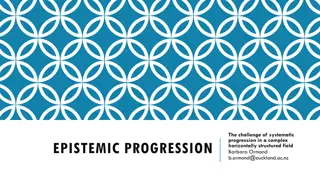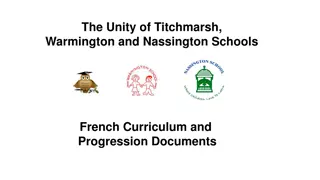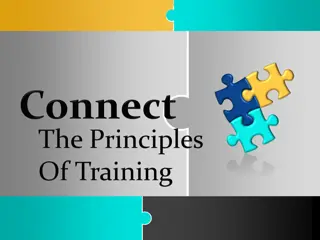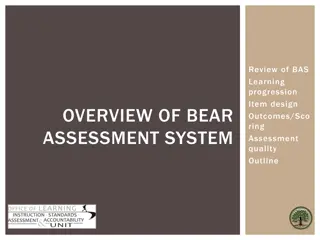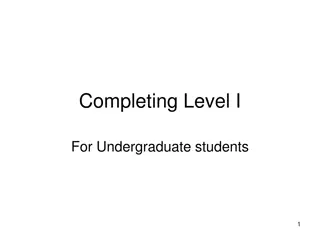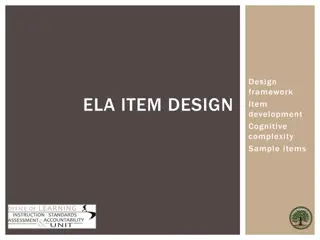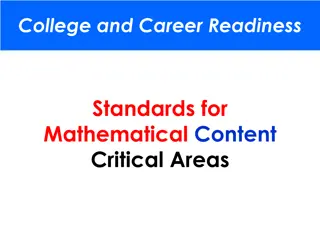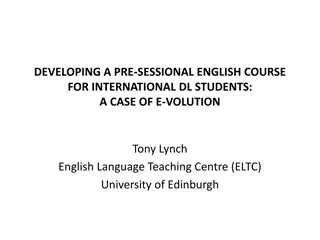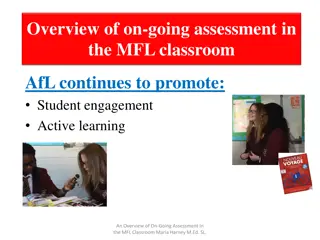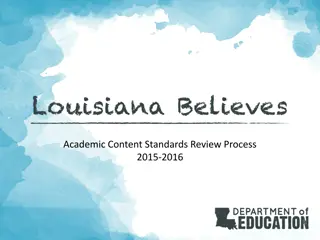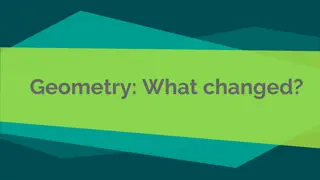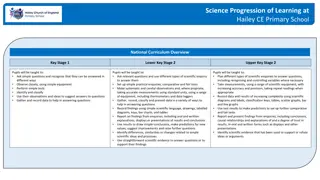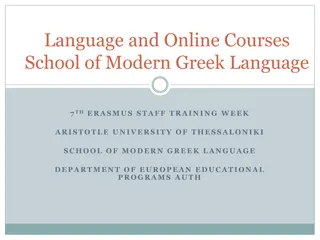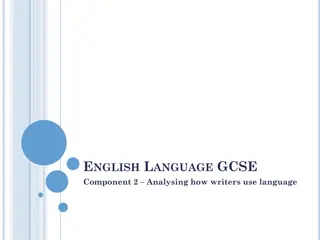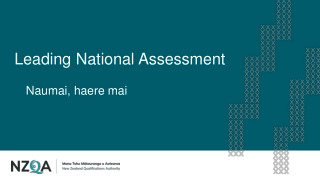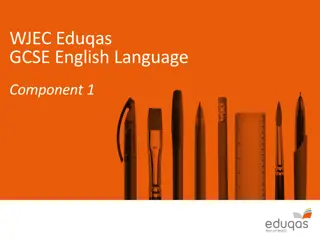English Language Learning Progression Assessment and Standards Overview
Explore the English Language Arts (ELA) learning progression, assessment targets, and selected themes. Understand how to read ELA standards, focusing on vocabulary acquisition and interpretation of words and phrases. Dive into grade-specific standards and themes such as reading comprehension and word analysis. Get a glimpse of the whole learning progression from upper elementary to middle school levels.
Download Presentation

Please find below an Image/Link to download the presentation.
The content on the website is provided AS IS for your information and personal use only. It may not be sold, licensed, or shared on other websites without obtaining consent from the author. Download presentation by click this link. If you encounter any issues during the download, it is possible that the publisher has removed the file from their server.
E N D
Presentation Transcript
ENGLISH LANGUAGE Introduction ELA Selected Themes Assessment targets Progress Map ARTS LEARNING PROGRESSION
4 BUILDING BLOCKS Learning Progression Item Design Assessment Quality Outcomes/ Scoring
INTRODUCTION Bear Assessment System Stage 1 Focus on the process of learning and on individual student s progress through that process Progress maps At a grade level, a learning progression map can represent one content standard/cluster within which standards are ranked in the order of cognitive complexity Across grade levels, a learning progression map represent several related content standards/clusters each of which standards are ranked in the order of cognitive complexity
HOW TO READ ELA STANDARDS Strand Anchor Domain Anchor Standard Language Vocabulary Acquisition and Use Determine or clarify the meaning of unknown and multiple-meaning words and phrases by using context clues, analyzing meaningful word parts, and consulting general and specialized reference materials, as appropriate. 4.L.4 Determine or clarify the meaning of unknown and multiple-meaning words and phrases based on grade 4 reading and content, choosing flexibly from a range of strategies. 4.L.4a Use context (e.g., definitions, examples, or restatements in text) as a clue to the meaning of a word or phrase. 4.L.4b Use common, grade-appropriate Greek and Latin affixes and roots as clues to the meaning of a word (e.g., telegraph, photograph, autograph). 4.L.4c Consult reference materials (e.g., dictionaries, glossaries, thesauruses), both print and digital, to find the pronunciation and determine or clarify the precise meaning of key words and phrases. Grade- specific Standards Grade level
ELA SELECTED THEME Claim #1 : Reading Anchor domain: Craft & structure Anchor standard: #1 on the interpretation of words and phrases Rationale: Simple to identify and understand in the content specifications
A GLIMPSE AT THE WHOLE LP! We ll be looking at an example from this portion, upper elementary to middle school
EXAMPLE LP (UPPER ELEMENTARY AND MIDDLE SCHOOL; INTERPRETING WORDS AND PHRASES) Grade Grade Code Code Specific Specific Common Core Standards Common Core Standards 8 8.RL.4 Determine the meanings of words and phrases as they are used in a text, including figurative and connotative meanings; analyze the impact of specific word choices on meaning and tone, including analogies or allusions to other texts. 7 7.RL.4 Determine the meanings of words and phrases as they are used in a text, including figurative and connotative meanings; analyze the impact of rhymes and other repetitions of sounds (e.g. alliteration) on a specific verse or stanza of a poem or section of a story or drama. 6 6.RL.4 Determine the meanings of words and phrases as they are used in a text, including figurative and connotative meanings; analyze the impact of a specific word choice on meaning and tone. 5 5.RL.4 Determine the meanings of words and phrases as they are used in a text, including figurative language such as metaphors and similes. 4 4.RL.4 Determine the meanings of words and phrases as they are used in a text, including those that allude to significant characters found in mythology (e.g. Herculean).
ASSESSMENT TARGETS In SBAC, each claim has specific assessment targets Each assessment target can overarch several common core standards across different anchor domains/standards For example: Strand: Reading Literary Text Grade: 8 Claim: #1 Total assessment targets: 7 Specific assessment target: Language Use (Target #7) Standards involved: RL-1, RL-4, L-5 (DOK 3) DOK Depth of Knowledge as listed in the Cognitive Rigor Matrix (SBAC, 2012). Numbers represent level.
BIBLIOGRAPHY Common Core Standards Initiative. (2014). Common core standards for English language arts & literacy in history/social studies, science, and technical subjects. Retrieved from http://www.corestandards.org/ELA-Literacy/ Hess, K., Carlos, D., Jones, B., & Walkup, J., (2009). What exactly do fewer, clearer, and higher standards really look like in the classroom? Using a cognitive rigor matrix to analyze curriculum, plan lessons, and implement assessments. Paper presented at CCSSO, Detroit, Michigan. Oregon Department of Education. (2014, June). Assessment guidance. Webb, N. (2007). Aligning assessments and standards. Retrieved from http://www.wcer.wisc.edu/news/coverStories/aligning_assessments_and_standards.p hp Wilson, M. (2005). Constructing measures: An item response modeling approach. New York: Psychology Press, Taylor & Francis Group. Wilson, M., & Sloane, K. (2000). From principles to practice: An embedded assessment system. Applied Measurement in Education, 13 (2), pp. 181-208. Smarter Balanced Assessment Consortium. (2012, April). General item specifications. Smarter Balanced Assessment Consortium. (2013, June). Appendix B: Grade Level Tables for All Claims and Assessment Targets and Item Types. Retrieved from http://www.smarterbalanced.org/wordpress/wp-content/uploads/2011/12/ELA- Literacy-Content-Specifications.pdf
CREATIVE COMMONS LICENSE Introduction to Learning Progressions (ELA) PPT by the Oregon Department of Education and Berkeley Evaluation and Assessment Research Center is licensed under a CC BY 4.0. You You are free to: are free to: Share Share copy and redistribute the material in any medium or format Adapt Adapt remix, transform, and build upon the material Under Under the following terms: the following terms: Attribution Attribution You must give appropriate credit, provide a link to the license, and indicate if changes were made. You may do so in any reasonable manner, but not in any way that suggests the licensor endorses you or your use. NonCommercial NonCommercial You may not use the material for commercial purposes. ShareAlike ShareAlike If you remix, transform, or build upon the material, you must distribute your contributions under the same license as the original. Oregon Department of Education welcomes editing of these resources and would greatly appreciate being able to learn from the changes made. To share an edited version of this resource, please contact Cristen McLean, cristen.mclean@state.or.us.
